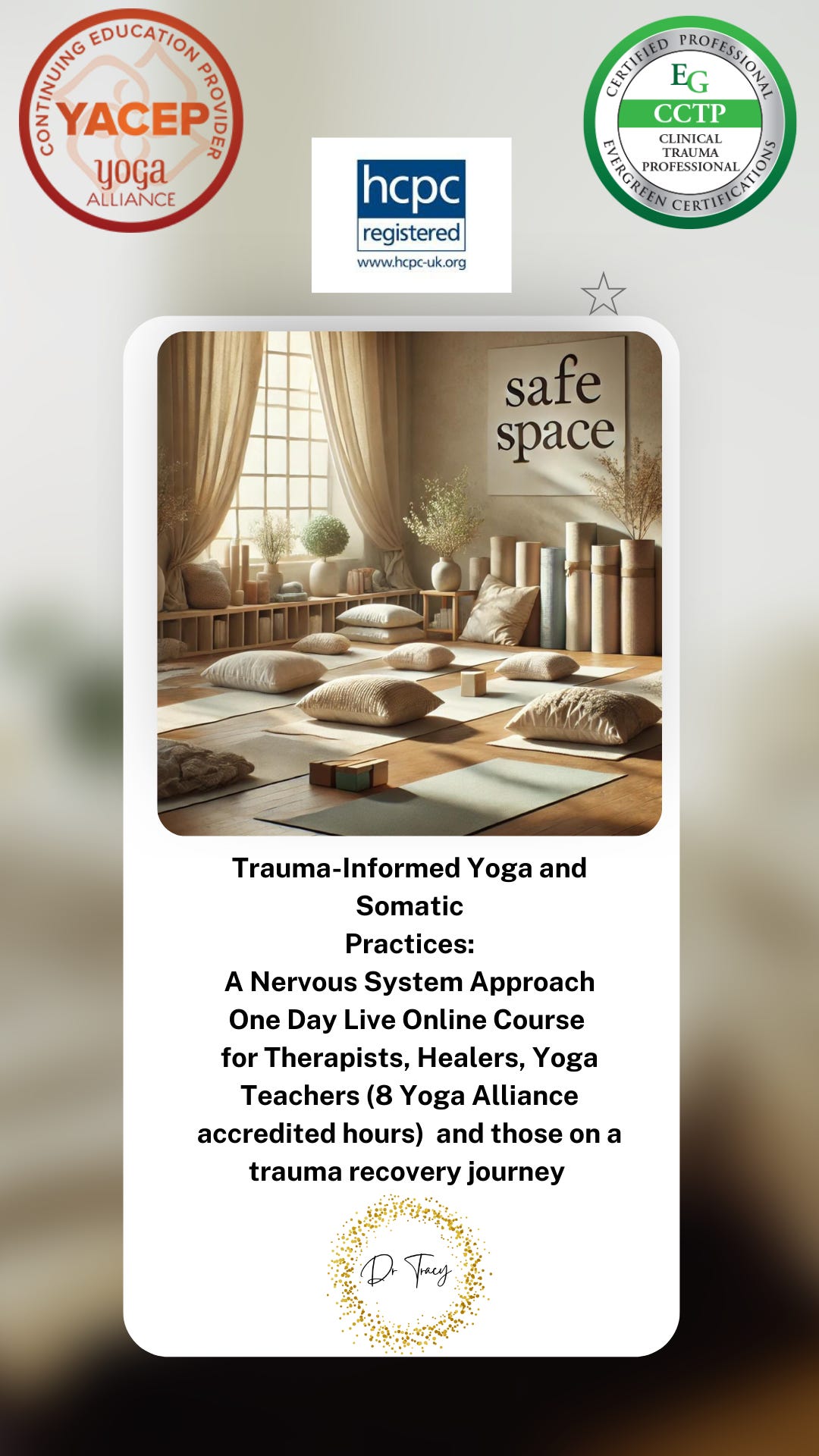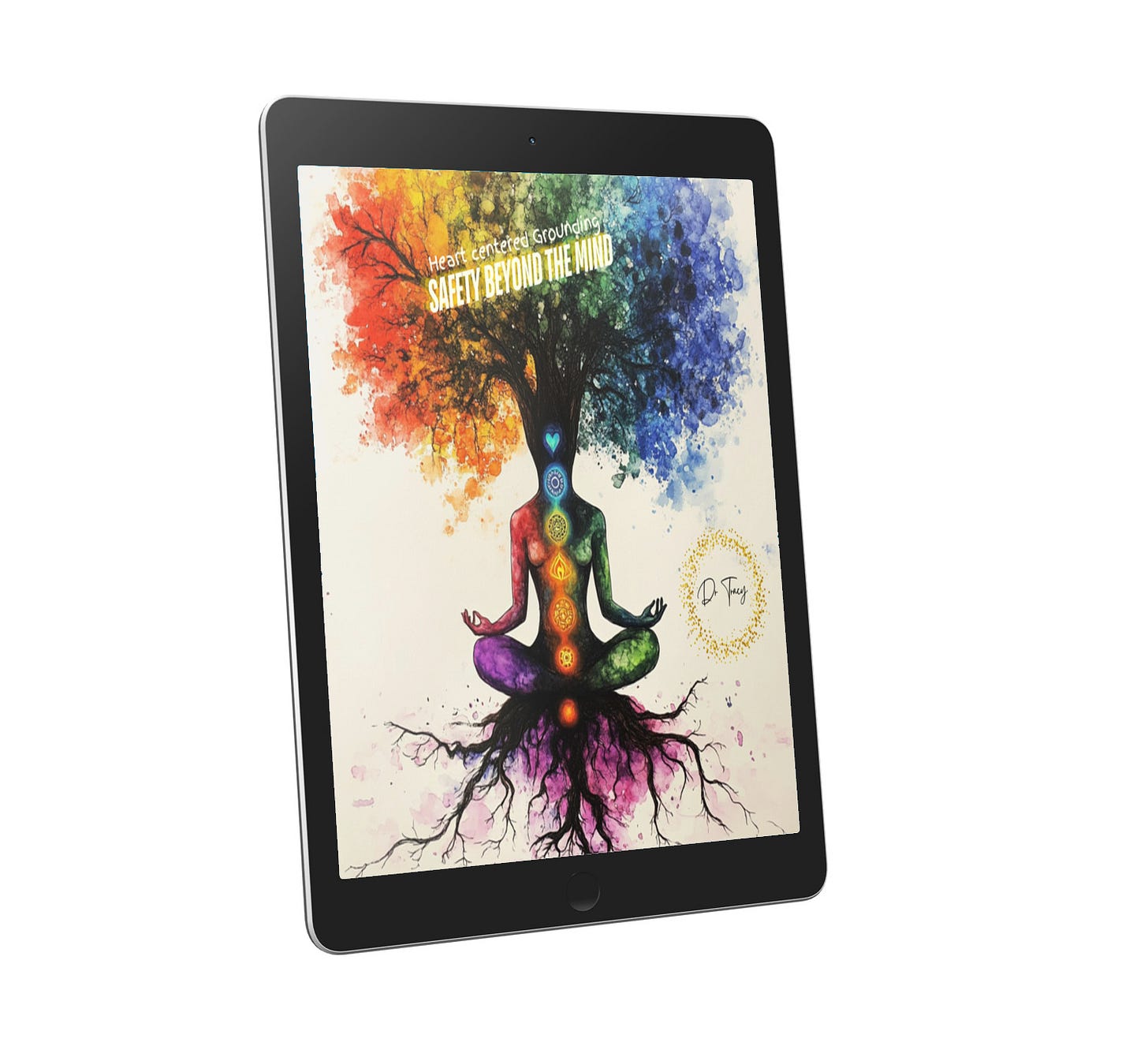The Breadcrumbs That No Longer Lead Us Home
Why the Coping Strategies That Kept You Safe Are Now Keeping You Stuck
"Hansel took his little sister by the hand. ‘Don’t worry,’ he said. ‘I’ll leave a trail of breadcrumbs behind us so we can find our way home.’ But when they turned back, the breadcrumbs were gone—eaten by birds, vanished into the woods. And there was no way back."
Adapted from the traditional fairy tale "Hansel and Gretel" by the Brothers Grimm, originally published in 1812.
Many of us are still trying to find our way home.
Not to the house we grew up in, but to a place that feels like peace inside our own body. A home that is soft, safe, and whole.
Like Hansel and Gretel, we’ve spent years laying breadcrumbs — subtle survival strategies to keep us safe in a world that once wasn’t.
Only our breadcrumbs don’t look like pieces of bread.
They look like perfectionism.
People-pleasing.
Hyper-independence.
Over-giving.
Emotional numbness.
Silencing ourselves to keep the peace.
Each one a learned behaviour. Each one a signal to the nervous system:
“This is how we stay safe.”
“This is how we stay loved.”
But the painful truth is this: the breadcrumbs no longer lead us home.
They can’t as we’ve seen them so often they just blend in we don’t even know they are there.
They lead us back to burnout.
Back to disconnection.
Back to a self that was built on survival, not wholeness.
The trail disappears.
And for the first time, we have to find a new path — one not shaped by trauma, but by conscious healing.
When Coping Becomes the Cage
A client of mine, Alina came to therapy after yet another burnout spiral and a month off work, saying, “I don’t understand. I meditate. I do yoga. I even booked a retreat. Why do I still feel like I’m holding my breath all the time?”
She was exposed to domestic violence in her childhood. She became hyper-vigilant, accommodating, and over-achieving. Her nervous system got stuck in sympathetic overdrive—chronic stress mode. Long after the chaos had ended, her body still lived as if something bad was always about to happen.
This is how trauma works. It doesn’t live in the event—it lives in the body’s unresolved response to the event.
The amygdala stays on high alert.
The hippocampus struggles to file emotional experiences into the past.
The prefrontal cortex—the part of the brain that helps us regulate emotions—gets hijacked.
So Alina’s body believed busyness was safety. Stillness was danger. Helping others was the only way she’d be allowed to exist.
We Learn to Survive in Brilliant but Costly Ways
Another client, Soraya, was known for being the “strong one.” Never cried. Never needed help. But once her life finally became stable, she couldn’t feel anything.
“I feel like I’m floating just above my life,” she said. “Like I’m here… but not really in it.”
That’s dissociation.
Not dramatic.
Just quiet absence.
A learned brilliance that says:
“I won’t feel it, because feeling hurt too much.”
Not dysfunction. Not weakness.
Intelligent adaptation.
But the longer we stay there, the more we lose touch with existence and sense of being alive.
Why Do We Keep Following the Old Breadcrumbs?
Because our nervous system is wired to protect us. Coping strategies are neurological shortcuts—conditioned responses your body believes will keep you safe.
So when you:
Go quiet in conflict
Say yes when you mean no
Overachieve to feel worthy
…it’s not you being difficult.
It’s your nervous system remembering danger.
The Fairytale Truth: You Don’t Need to Go Back
In the story, Hansel and Gretel’s breadcrumbs were eaten.
There was no path home.
That’s us, too.
Only our breadcrumbs were beliefs and behaviours:
“If I’m useful, they’ll love me.”
“If I stay small, I’ll stay safe.”
“If I never rest, I’ll never be abandoned.”
But those breadcrumbs no longer lead anywhere.
Not because we’ve failed.
Because we’re no longer meant to go back.
So What Now?
1. Name Your Breadcrumbs
What were your core coping strategies?
What did they protect you from?
What are they costing you now?
“I survived by keeping the peace. But now I feel invisible.”
“I survived by controlling everything. But now I feel disconnected from joy.”
2. Soften the Pattern in the Body
When the pattern activates, pause.
Put your hand on your heart, belly, or cheek.
Say:
“Thank you for protecting me.
But I’m safe now.
You can rest.”
This regulates your vagus nerve and begins to shift the trauma loop.
3. Ask New Questions
Try these:
“What do I feel?”
“What does my body need right now?”
“If I trusted I was enough, what would I choose?”
Each answer is a stepping stone in your new path.
The Trail You’re Building Is Real
The breadcrumbs were brilliant.
But they were never meant to carry you forever.
They got you here.
Now it’s time to walk a different way.
You’re not going back.
You’re becoming.
And this time, you are leading yourself home.
Not by the trail you left behind,
but by the one you are finally safe enough to build and home may look entirely different to what you ever imagined it could be.
Understand Your Patterns. Reclaim Your Power.
“Your nervous system learned how to protect you before you even had words.”
The Nervous System Mapping tool below will help you plot your nervous system responses — so you can begin to identify how you move through fight, flight, freeze, and fawn, and start to build a felt sense of safety in real-time.
Use it as a journal, print it out, or revisit it weekly to notice patterns.
STEP 1: WHERE AM I RIGHT NOW?
Begin by checking in with your body. Ask:
What sensations am I noticing?
Where is my breath — shallow or deep?
How fast is my heart?
Do I feel connected or distant from myself?
What’s my energy like: activated, flat, or frozen?
Now scan the following four states and choose the one that best matches your experience right now.
FIGHT (Protective Anger or Defensiveness)
Body Sensations:
Jaw tension
Fists clenched
Hot, tight chest
Sudden surges of energy or irritation
Thoughts:
“Why won’t they just listen?”
“I need to fix this now.”
“No one’s ever going to hurt me again.”
Behaviours:
Snapping or shouting
Pacing, slamming doors
Needing to argue or defend yourself
Healing Note:
FIGHT protects your boundaries. You’re trying to regain control in a situation where you feel powerless. This part of you once ensured survival by pushing back.
FLIGHT (Anxiety or Escape)
Body Sensations:
Racing heart
Restless legs
Fast breathing
Urge to “do something” now
Thoughts:
“I have to get out of here.”
“What if something goes wrong?”
“I need to stay busy or I’ll fall apart.”
Behaviours:
Overworking
Avoiding situations
Constant planning or list-making
Feeling overwhelmed by small tasks
Healing Note:
FLIGHT protects you by keeping you in motion. It says: “If I can just keep running, I’ll stay ahead of the threat.”
FREEZE (Shutdown, Dissociation, Numbness)
Body Sensations:
Heavy limbs
Foggy or slow thinking
Shallow breathing or holding breath
Feeling far away or disconnected from your body
Thoughts:
“I don’t care.”
“What’s the point?”
“I just want to disappear.”
Behaviours:
Zoning out
Withdrawing
Feeling stuck or immobilised
Difficulty making decisions
Healing Note:
FREEZE is your system hitting the brakes. It developed when escaping or fighting wasn’t safe. It’s a powerful protective pause.
FAWN (People-Pleasing, Over-Attuning to Others)
Body Sensations:
Tight throat or chest
Shaky hands
Shallow breath when around others
Energy crash after social interactions
Thoughts:
“I need to keep them happy.”
“If I say no, they’ll leave me.”
“I’ll deal with my feelings later.”
Behaviours:
Smiling through discomfort
Over-apologising
Prioritising others’ needs
Not expressing true thoughts or needs
Healing Note:
FAWN kept you safe in relationships where love was conditional. It says: “If I can please them, maybe I’ll be safe.”
STEP 2: YOUR NERVOUS SYSTEM MAP
Use this space to reflect:
Today, I noticed I was in: (circle one)
FIGHT | FLIGHT | FREEZE | FAWN
Triggers or context that led to this state:
(e.g. email from work, conversation with partner, too much noise, lack of sleep)
How my body responded:
(Describe physical symptoms, emotions, thoughts)
What this state was trying to protect me from:
(e.g. rejection, conflict, overwhelm, being seen)
What I needed but didn’t receive:
(e.g. safety, rest, reassurance, permission to say no)
STEP 3: REGULATING AND RETURNING TO SAFETY
Choose one or more of the following practices to support nervous system recovery:
FIGHT → Gentle movement (walking, shaking, yoga), journalling anger
FLIGHT → Breathwork (4-7-8- inhale for 4 hold for 7 exhale for 8, or box breathing), grounding with feet or cold water
FREEZE → Touch (weighted blanket, self-holding), orienting to your environment
FAWN → Voice activation (hum, sing), boundary practice: “I need…” or “Not right now”
Journal
Which practice did you try today?
How did it feel in your body afterwards?
STEP 4: SOMATIC AFFIRMATION
Finish with a body-based affirmation to soothe and integrate:
“I am safe in this moment.”
“My body remembers, but I can choose something new.”
“I’m allowed to rest. I’m allowed to feel. I’m allowed to take up space.”
Your nervous system is not the enemy — it’s a brilliant, loyal protector.
It just needs new experiences of safety to rewrite old patterns.
By mapping your states, you’re not just learning about your body —
you’re reclaiming your power to respond rather than react,
to soothe without shame,
to listen to yourself with love.
You’re not stuck.
You’re learning a new language — and the dialect is self-trust.
Subscribe to get your Inner Protector Dialogue for reparenting at the end of this article
If you want to know more about body-based approaches to well-being and healing why not consider my somatic approaches course where I dive more deeply into body-based ways to regulate the nervous system: Click the image below to find out more:
If you don’t want a regular commitment but would like to contribute to me helping others then click below to buy me a coffee!
I recently spoke about the importance of learning to work with your nervous system, which includes grounding, on UK Health Radio - click the image below to listen.
If you feel you want to try some meditations to help you reconnect with your body which can really help when trying to set boundaries, as you can learn to feel when something does and does not serve you. Click the images below to find out about the specific focus of each. All my meditations use healing frequencies, subliminal messages and binaural beats to enhance recovery - if these terms feel meaningless click, the images to find out more.
To continue to reconnect with your body more and remain mindful and present, see if any of these online courses from Rewire Trauma Therapy resonate with you:
Paid subscribers see my code below for 50% off courses over $240 dollars
Somatic Therapy Programme Link
For media enquiries please see my press page









